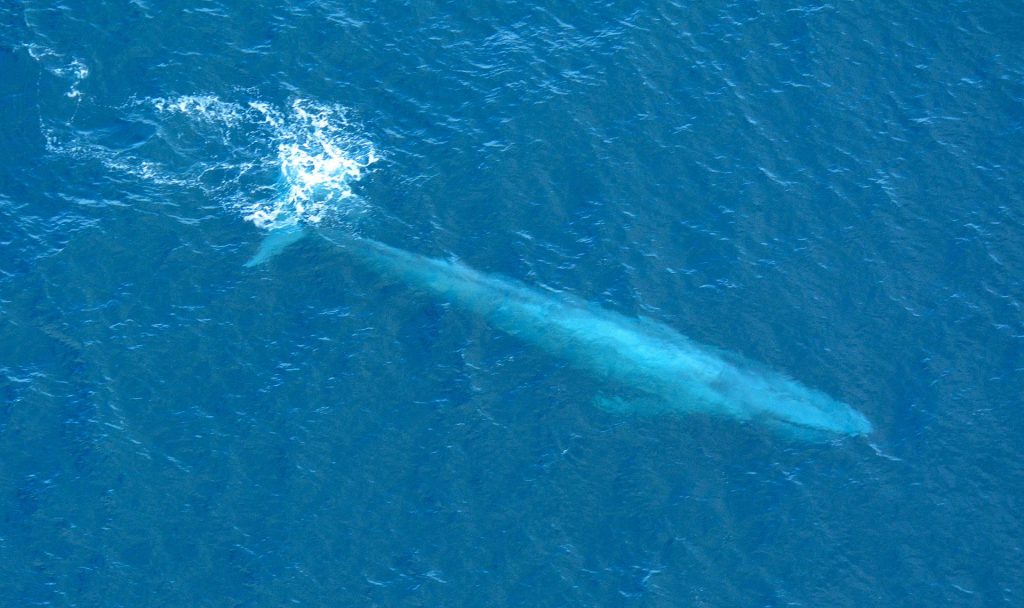
(Photo: D. Ramey Logan via Wikimedia Commons, CC-BY-SA 3.0)
STATUS
Federal: Endangered
POPULATION TREND
= Stable
RESTORATION
Difficult
FAMILY
Balaenopteridae, a group of baleen whales
RANGE
Global distribution (except in Arctic Ocean); the northern blue whale (B. m. musculus) subspecies ranges from Alaska to Costa Rica
Appearance
The blue whale is the largest known animal to have ever existed on planet earth. Blue whales are unmistakable due to their size (averaging 25 meters in length and weighing up to 172 metric tons), blue color, sleek bodies, and U-shaped head.
Habitat & Behavior
Blue whales are often found in cold, productive waters where prey is abundant. During the summer and fall, when northern blue whales can be found near the coast of California and the Channel Islands, they feed almost exclusively on patches of krill and copepods. A single whale can consume up to 2 metric tons of krill per day.
Threats
Blue whales were targeted by whalers and commercial hunters since the late nineteenth century, until an international hunting ban took effect in 1966. However, current threats to blue whales still exist, which include entanglement in fishing gear, collisions with vessels (ship strikes), disturbance from low-frequency noise, and pollution. Changes in sea surface temperatures can also impact the distribution and density of krill, their main prey.
Conservation
Before the blue whale was listed as a protected species by the International Whaling Commission, as well as under the Endangered Species Act in 1970, its numbers were significantly depleted. The northern blue whale population is slowly recovering and currently estimated at about 2,000 individuals. Several organizations, such as the Center for Biological Biodiversity, have continued to push for better protections against ship strikes for blue whales and other marine mammals.
About This Map
This map is based on summer and fall sightings of blue whales. The sightings were recorded during ship surveys and used to build a habitat model that shows approximate whale density, or the number of individual animals that scientists have predicted should occur per square kilometer of ocean. Only the Western U.S. range of the whale’s distribution is shown here. The model was developed by Dr. Elizabeth Becker and her team (a link to her paper and the data is under Data Sources below).
Where can you spot it?
Northern blue whales may be seen off the coast of Los Angeles from June to October.
Data source: Blue whale habitat based density model from Becker et al. (2016) in Remote Sensing, 8(2), accessed via CetSound
Acknowledgements: We would like to thank Elizabeth Becker for generously sharing the blue whale distribution data.
References: